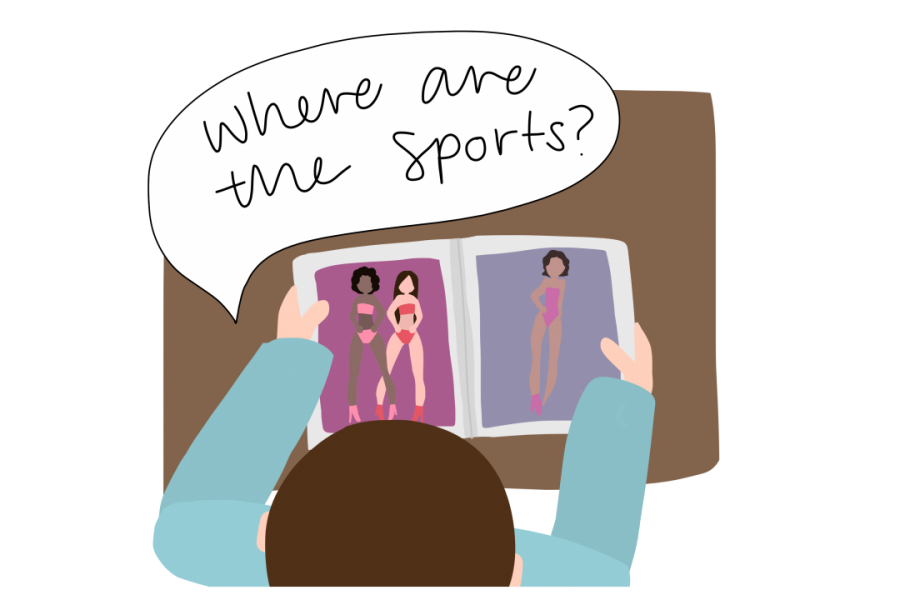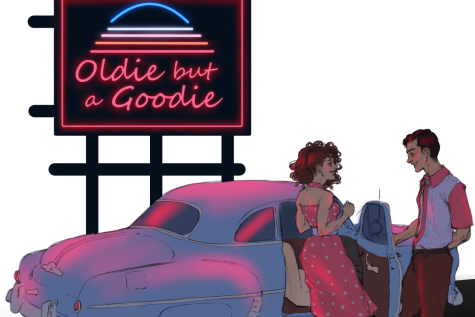Sex has no place in sports
“Every year, Sports Illustrated’s Swimsuit Edition brings in about 7 percent of revenue for the renowned publication, according to Forbes. But what does it have to do with sports?”
It’s an easy sell: sculpted supermodels posing in exotic locations wearing little to no clothing, right at the fingertips of anyone willing to fork over a few dollars. Every year, Sports Illustrated’s Swimsuit Edition brings in about 7 percent of revenue for the renowned publication, according to Forbes. But what does it have to do with sports?
Nothing. The majority of models in the Swimsuit Edition, while maintaining fit lifestyles, are not athletes. Unlike the ESPN Body Issue, another revealing magazine featuring male and female professional athletes that portrays them in their respective sports, the Swimsuit Edition does not highlight strength. While ESPN shows off all body types, ranging from 325-pound defensive tackle Vince Wilfork to 5-foot-2 Olympic figure skater Ashley Wagner, Sports Illustrated sticks to pictures of Kate Upton half-naked on the beach.
Although the Swimsuit Edition may not have anything to do with athletics, it passes by without an afterthought in the sports world. Why? Professional sports are a form of entertainment. Just as in movies and television, sexual themes help programs gain traction and retain viewers’ attention. The Swimsuit Edition, along with cheerleading in professional sports leagues, appeals to a mostly-male audience.
Combining sexual undertones with sports has created a society where body standards are not accurate to the majority of the population. Seventy-one percent (223/315) of KHS students said society has unrealistic body standards. When advertisers constantly show the same body type to an audience, viewers may form expectations that all bodies should look the same way. This leads to the objectification of women, and in professional sports, cheerleaders suffer as a result.
Last year, several former NFL cheerleaders filed lawsuits against their former teams based on appalling allegations. In May, five ex-Houston Texans’ cheerleaders sued the team, claiming they were harassed, body-shamed and paid less than minimum wage. In 2013, the Washington Redskins franchise flew their cheerleading squad to Costa Rica for a photo shoot. Team officials collected their passports so they could not identify themselves and allegedly forced the women to pose topless in front of team sponsors and stadium suite holders. The NFL treats cheerleaders like sex objects, but they did not sign up for that job.
Recently, things have looked different for professional cheerleading. Napoleon Jinnies and Quinton Peron made history as the first male cheerleaders to perform during the Super Bowl Feb. 3. This milestone is an important one, as bringing in more men to the world of professional cheerleading could work to desexualize it. Promoting cheerleading for cheer’s sake unlike the current state of the sport, which advertises these women as bodies and not people, would greatly benefit professional sports.
There’s nothing inherently wrong with cheerleading or the Swimsuit Edition. It becomes a problem when it’s tied to sports and designed to appeal to fantasies. Especially in a world with so many dominant female athletes, portraying women as sex objects to attract sports fans does nothing but promote a predatory culture.
Your donation will support the student journalists of Kirkwood High School. Your contribution will allow us to purchase equipment and cover our annual website hosting costs.

Interests: Tennis, baseball, reminiscing on the glory days of YouTube, posing as a food critic and knowing a ridiculous amount of information about Harry...

Interests: Cross country, art, playing with my dog, and watching Netflix
Favorite quote: “Sweet niblets!” -Hannah Montana
Favorite food: Chocolate...








